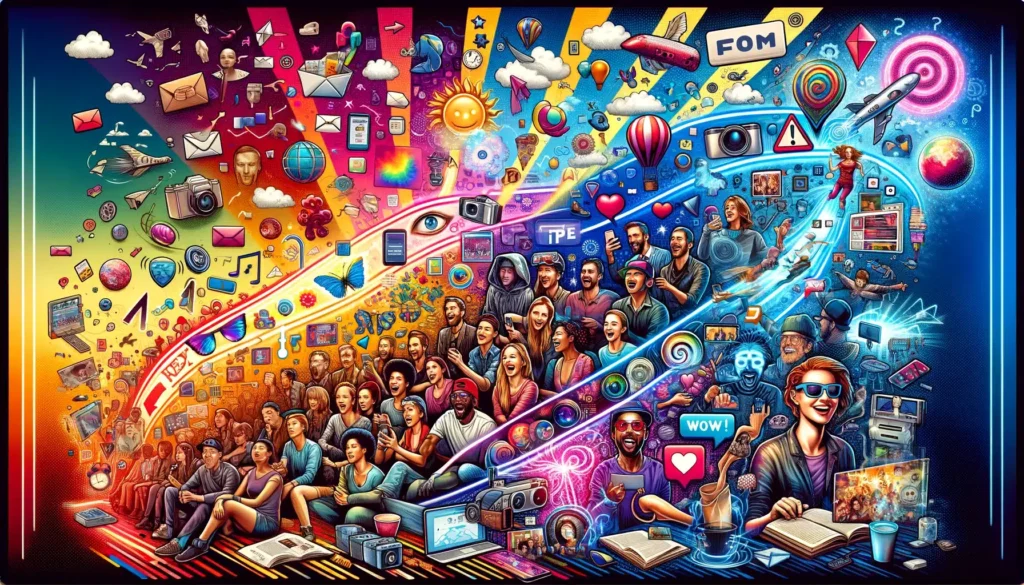Staff at Benamor Galvez

Consumers are skeptical of traditional advertising, but they trust recommendations from real people. 92% of consumers trust organic, user-generated content more than traditional ads because it comes from actual customers who have experienced a product or service firsthand. Seeing real people using and enjoying a product creates an instant sense of credibility.
UGC transforms passive customers into active brand advocates. When customers share their experiences, it not only promotes your brand but also fosters a sense of community and belonging. People love to see their content featured by brands, which encourages even more participation and engagement.
Creating high-quality content can be expensive, but UGC provides a steady stream of free, organic content. Instead of spending resources on professional photography or video shoots, brands can tap into authentic, high-quality content created by real customers.
User-generated content acts as social proof, influencing purchase decisions. Whether it’s a customer review, an Instagram post, or a YouTube testimonial, people are more likely to buy when they see others enjoying a product. Studies show that UGC can increase conversion rates by up to 29%.
Affiliate marketing continues to evolve, with new trends and platforms shaping the way businesses and marketers approach performance-based partnerships.
Affiliate marketing has moved beyond blogs into the heart of social media. Platforms like TikTok Shop, Instagram Shopping, and Pinterest Product Pins now allow creators to tag and sell products directly within their content—making affiliate marketing a seamless, in-app experience.
Tools like Amazon Storefronts and LTK let influencers curate product picks and earn commissions, turning their personal brand into a shoppable destination. With short-form videos, tutorials, and real-time recommendations, affiliate marketing has become more visual, accessible, and trust-driven than ever.
Artificial intelligence (AI) is playing a crucial role in optimizing affiliate marketing strategies. AI-powered tools analyze consumer behavior, predict trends, and automate personalized recommendations, making affiliate campaigns more targeted and effective. Platforms like Refersion and PartnerStack help businesses manage and optimize affiliate partnerships using real-time data.
While traditional affiliate marketing was often based on one-time commissions, many programs now offer recurring commissions for subscription-based services. This model benefits affiliates by providing a steady stream of passive income rather than relying solely on individual sales. SaaS companies, streaming services, and online learning platforms have adopted this approach successfully.
While large affiliate networks like CJ Affiliate, ShareASale, and Rakuten still dominate the industry, more brands are launching direct affiliate programs to establish stronger relationships with partners. This shift allows businesses to offer customized incentives and better commission structures, ultimately fostering long-term collaboration.
With mobile usage continuing to rise, businesses are optimizing their affiliate programs for mobile traffic and in-app purchases. Retailers, fintech companies, and gaming apps are leveraging affiliate partnerships within mobile apps, allowing seamless tracking and direct purchases through referral links.

Every holiday season, Starbucks launches its #RedCupContest, encouraging customers to share creative photos of their holiday-themed Starbucks cups. This simple yet powerful campaign not only promotes seasonal sales but also generates thousands of pieces of engaging, visually appealing content that Starbucks can feature across its marketing channels.
GoPro has mastered UGC by encouraging users to share videos captured with their cameras. By showcasing real-life adventure moments, GoPro turns its customers into brand ambassadors, proving the quality and versatility of its products while building a passionate, engaged community.
Airbnb’s marketing is built around real guest experiences. The brand regularly features user-submitted photos, testimonials, and travel stories on its website and social media. This strategy helps potential customers see authentic, relatable experiences rather than polished, staged advertising.
User-generated content (UGC) has become one of the most powerful marketing tools for modern brands. It builds trust, boosts engagement, and helps create an authentic community around your product or service. Here’s how to encourage and make the most of it:
One of the easiest ways to get customers sharing content is by launching a branded hashtag. This gives users a clear way to tag their posts and join a wider conversation around your brand.
Take it a step further with contests or challenges. A simple campaign that invites users to post for a chance to win a giveaway—or be featured on your page—can drive major participation. The goal is to make sharing fun, rewarding, and easy.
Don’t let great user content stop at social media. UGC can be a valuable asset across multiple touchpoints, including:
Showing real people using your product adds authenticity, builds credibility, and helps new customers see themselves in the brand.
While some users will post organically, others may need a nudge. Offering small incentives can go a long way in encouraging content creation. These could include:
The most successful UGC strategies foster a sense of community, not just participation. Show your audience that their voices matter by:
The more valued your customers feel, the more likely they are to continue contributing and spreading the word.
UGC has been proven to outperform traditional ad creatives. Why? Because content created by real users feels more relatable and trustworthy.
Try incorporating UGC into:
This not only improves click-through and conversion rates, but it also helps your brand feel more human and accessible.

At BENAMOR GALVEZ, we harness the power of user-generated content (UGC) to create authentic, community-driven marketing strategies that connect emotionally with audiences. A great example of this is our Mother’s Day campaign for South Florals. We invited customers to share personal stories and photos celebrating the mothers in their lives—featuring South Florals arrangements.
By encouraging this kind of heartfelt participation and resharing user content across social media, we helped elevate real customer voices while deepening the brand’s emotional resonance. Through branded hashtags, storytelling prompts, and strategic content placement, we turned genuine customer moments into a meaningful, engagement-driving campaign that resonated far beyond the holiday.
User-generated content is one of the most effective ways for brands to build trust, engagement, and community while keeping marketing costs low. In an era where consumers value authenticity over advertising, brands that embrace UGC will stand out, create meaningful connections, and drive higher conversions. By encouraging customers to share their experiences and incorporating their content into marketing strategies, businesses can turn everyday users into powerful brand advocates. If you’re not leveraging UGC yet, now is the time to start—because the most trusted voices in marketing are your customers themselves.
Creative Director at Benamor Galvez

Read More

Read More

Read More